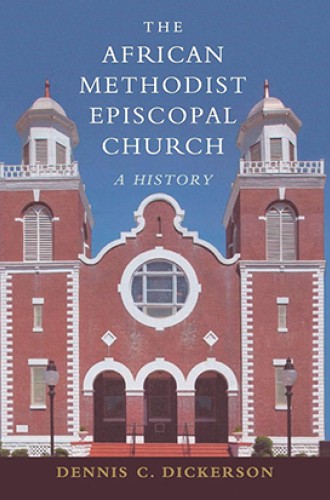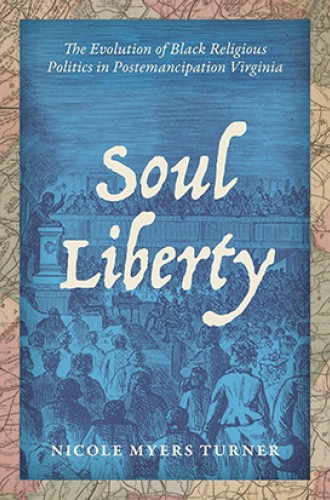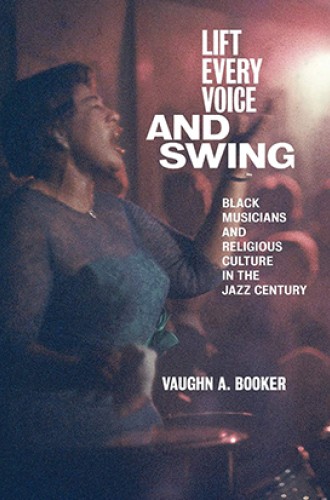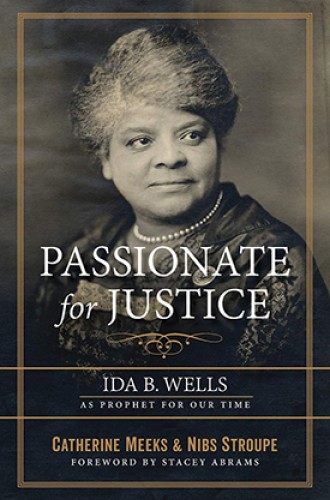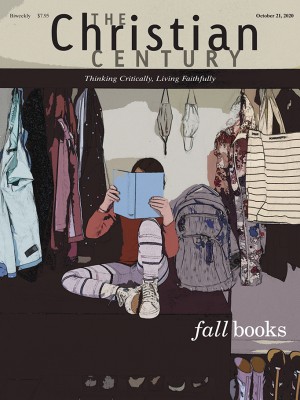Take & Read: American religious history
Four new books that explore Black Americans’ religious witness
This year’s racial justice protests, sparked by outrageous incidents of violence by police officers and White vigilantes, have led many Americans to inquire more deeply than ever before into America’s racial history. Religion has intersected with race throughout American history, and many of the best new books in the field focus on Black Americans’ religious witness. From building churches to creating art and music to pursuing faith-based social justice in the public square amid the threat of lynching, African Americans have persisted in a nation that repeatedly denies the value of Black lives.
Dennis C. Dickerson’s The African Methodist Episcopal Church: A History (Cambridge University Press) reflects insights gleaned through the author’s distinguished career as a US labor, civil rights, and church historian. Those interested in learning more about the history of the Black church will find no better resource than this thoroughly researched volume. Dickerson carefully investigates each era of the history of the nation’s most storied Black denomination, beginning with the dramatic tale of Richard Allen’s 1787 exodus from the segregated St. George’s Church in Philadelphia to found a Black congregation.
Read our latest issue or browse back issues.
The writing displays the care and devotion of a member of the AME tradition but also the critical reflection of a scholar. Dickerson’s central question involves a tension at the heart of the tradition, between the need to preserve and develop what was for decades one of the only US institutions controlled by Black people and the imperative to follow the liberationist example of its founder by openly assailing slavery, racism, and colonialism. Dickerson locates instances of the latter in figures outside the hierarchy of denominational leadership: laypeople including civil rights leaders A. Philip Randolph, Rosa Parks, and Daisy Bates.
The rollout of this celebrated denominational history has included a Facebook Live companion series in which dozens of historians and church leaders unpack and discuss each chapter. Much of this content remains available online and, amid this time of physical distancing, provides a profound means of connection around a book that builds on over 200 years of Black Methodist piety and social action.
The Black church is also the subject of Nicole Myers Turner’s Soul Liberty: The Evolution of Black Religious Politics in Postemancipation Virginia (University of North Carolina Press), which deeply examines a diverse set of Black church associations and networks in postemancipation Virginia, especially the Petersburg area. Turner focuses on how clergy and laypeople in a variety of traditions, including Baptist, Episcopal, and Zion Union Apostolic churches, built church associations while also engaging in their first forays as citizens, voters, and elected officials in the Reconstruction era.
She contends that Black churchpeople used the political sphere to defend their own interests and to seek a fusion of religious freedom and social justice they referred to as “soul liberty,” quoting 17th-century Baptist Roger Williams. Yet she also attends carefully to the ways Black male clergy-politicians were able to define religious and political authority in gendered terms that excluded Black women from formal leadership roles. Turner’s feminist analysis enables readers to better understand the role of religion in the lives of those in the pews, most of them women, as well as those in the pulpit.
Turner also provides technological innovations to make her research more accessible to the public. The book is available as a free enhanced open-access e-book, accompanied by interactive geographic information system mapping resources. Like Dickerson, Turner has produced a work of scholarship alongside multimedia enhancements in a spirit of democracy, community, and accessibility in the public sphere.
Black Americans have created formal religious institutions and drawn on them as a base for political organizing. They have also engaged in meaning-making through the creative production of music, art, and popular culture. In Lift Every Voice and Swing: Black Musicians and Religious Culture in the Jazz Century (New York University Press), Vaughn A. Booker traces religious elements through the careers and music of Cab Calloway, Duke Ellington, Ella Fitzgerald, and Mary Lou Williams.
Booker argues that jazz musicians became “race representatives,” ambassadors of Black respectability to the White-dominated world—despite older Black religious and community leaders’ concerns about jazz’s supposedly uncivilized or immoral character. Some of these musicians even became, in a sense, religious authorities. By providing representative portrayals of Black religion and culture in their music, they transformed the genre into one more closely aligned with a noble heritage of divinely inspired Black music originating from Africa, continuing through the development of slave spirituals, and persisting into the 20th century.
Booker provides a music appendix, which includes YouTube links to songs and performances by the subjects of his book. This yields an alternating form of readership—read, listen, read, and listen again—so readers may enjoy a fuller sensory understanding of the material.
Religious Black Americans have produced venerable church and political institutions and transformational music and art, yet they have always done so while living in a culture suffused with the threat of suffering and violence, from 1619 to 2020. How can people of faith continue to speak up for justice in an era when White supremacy reigns at the ballot box, in the halls of power, and in the courtroom and when Black people face a constant threat of police and vigilante violence?
One answer is found in the story of the prophetic Black woman who led the fight against lynching in just such an era a century ago: Ida B. Wells. In Passionate for Justice: Ida B. Wells as Prophet for Our Time (Church Publishing Incorporated), Catherine Meeks and Nibs Stroupe write alternating chapters lifting up this courageous figure as an example for Christians in a time when prospects for antiracist progress often seem bleak. Wells was one of the greatest racial justice leaders in American history, but she lived in a time in which White people of all political persuasions were united in support of a new system of White supremacy. Thus her victories were less obvious than those of activists from the Civil War or civil rights eras. As Stroupe repeatedly notes, although Wells “never won many victories, she was never defeated.”
The book is not exactly a work of history. Rather, it draws on historical examples, Christian theology, and the personal stories of the coauthors—a Black female scholar and a White male pastor—as a kind of guided tour through history. This tour seeks to enable contemporary Christians to draw on their own experiences, religious resources, and the example of Ida B. Wells to engage in antiracism. The authors provide questions for personal reflection at the end of each chapter, and in some ways the book feels like the theological equivalent of Ibram X. Kendi’s How to Be an Antiracist.
An audiobook version offers the powerful experience of hearing the book’s chapters in the authors’ own voices. This enables them to model the practice of respectful yet direct dialogue, as when Meeks corrects Stroupe’s assertion about Wells’s lack of victories by pointing out that merely surviving as a Black activist woman in such an oppressive world was itself a remarkable victory.
Meeks and Stroupe could not have foreseen the pandemic that would arise shortly after the publication of this book nor the intense soul-searching many Americans would soon engage in around racial justice. Even so, amid the strange blend of isolation and solidarity wrought by 2020’s dual pandemics of COVID-19 and racist violence, it is a profound, stirring, and at times even comforting experience to listen to the alternating stories of a Black woman and a White man who have collaboratively examined history, theology, and their own experiences in search of the tools we all need to accompany our journeys of antiracist witness.


